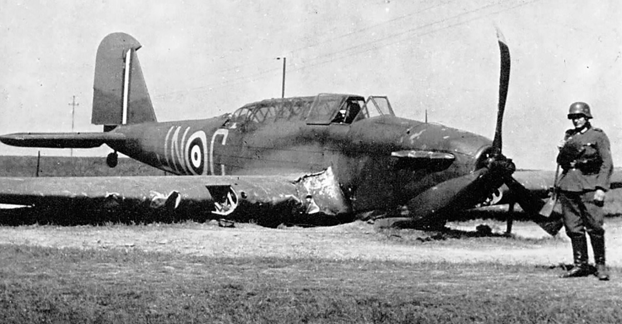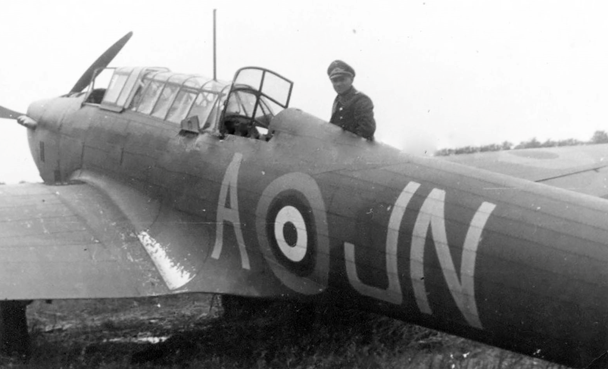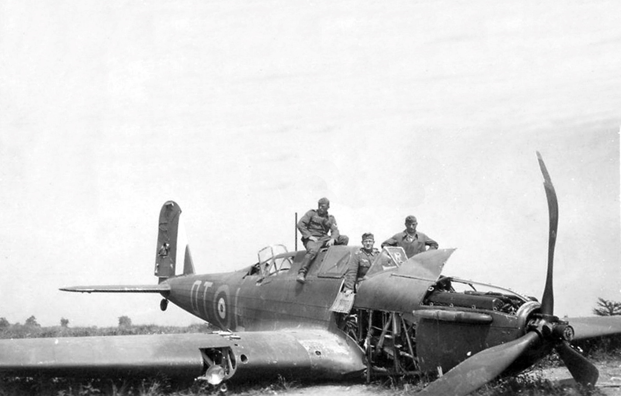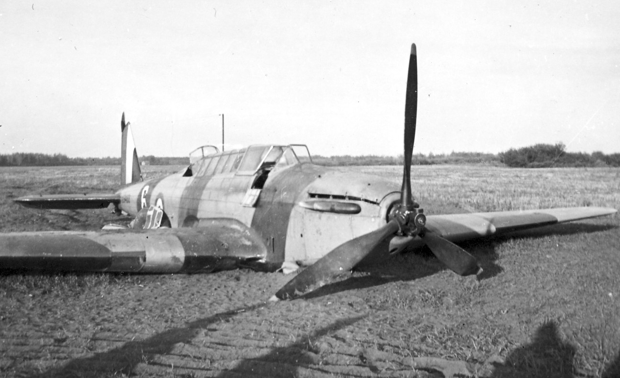The Fairey Battle airplane, best considered Messerschmitt fodder, was a good aircraft in its day – but by the beginning of WW II its day had passed.
Designed in the mid 1930s by the British, Fairey Aviation Company, the three-man mono-plane bomber replaced the Hawker Hart bi-plane. It was powered by the mighty Merlin I engine, but that was not enough. It was delivered to the RAF in June 1937. When war broke out in September 1939 several Fariey Battle squadrons were sent to France as the Advanced Air Striking Force (AASF) supporting the British Expeditionary Force and the French Army.
We don’t have a Fairey Battle in our Western Development Museum, but we should. Bits and pieces are scattered across France and Saskatchewan, although not for the same reason. The RCAF had 740 of them, used for flying training, and gunnery training.
It was Messerschmitt Fodder because so many were shot down over France in the early stages of WW II. RAF Squadrons often had 50 to 60% losses in single operations.

This is Fairey Battle JN-C of 150 Squadron, RAF. JN-C took off from Houssay, Loire-et-Cher, France at 10:30 on May 13, 1940. They were to attack a column of advancing German troops and armour. They were shot down by an Messerschmitt 109 from 3/JG3(Squadron) at 10:30. They crash landed at Mrey, France.
On May 13, 1940 seventy-one were sent out. Only 40 returned. Of the 4 Battles from 150 Squadron, all were lost.

JN-A took off from Houssay, Loire-et-Cher, France at 04:50 on June 15, 1940 to attack German armour in the Lower Seine valley. It was attacked by several Bf 109s and “… crash-landed at la Ferté-Vidame (Eure-et-Loir), 40 km SW of Dreux, France.”
Of the crew, only LAC E.G. Hillyard was injured. After landing the 3-man crew headed off, hoping to get away from German soldiers.
Leading Aircraftman E. G. Hillyard (Wireless Op./Air Gunner) RAF 747947 was hospitalized and his right arm was amputated. He recovered and escaped back to Britain by way of Gibraltar.
The Observer, Sergeant F. A. Armstrong, and pilot, Pilot Officer E. A. Benjamin, were captured.
The next day, June 16, 1940, the squadron flew back to Britain.

Royal Air Force, Fairy Battle Mrk. I, L5503 ' QT-L', 142 Squadron, RAF, was based at Eastleigh, Hampshire, England.
It took off on the night of August 22/23, 1940 from their base in Britain to bomb the E-Boat installations at Boulogne-sur-Mer in France. It was shot down near the target.
Of the three aircrew, 19-year-old Wireless Air-Gunner Sergeant Laurence Mortimer Lowry (649386) was killed.
Pilot Officer, Alan George Middleton and Royal Navy, Midshipman, Arthur Taylor (attached to the RAF) became a prisoners of war. It is assumed Midshipman Arthur Taylor was the Observer/Navigator.
Summary:
The brave men who flew these aircraft into battle deserve respect.
The aircraft were eventually pulled out of active service and used for training. 740 were sent to Canada.




